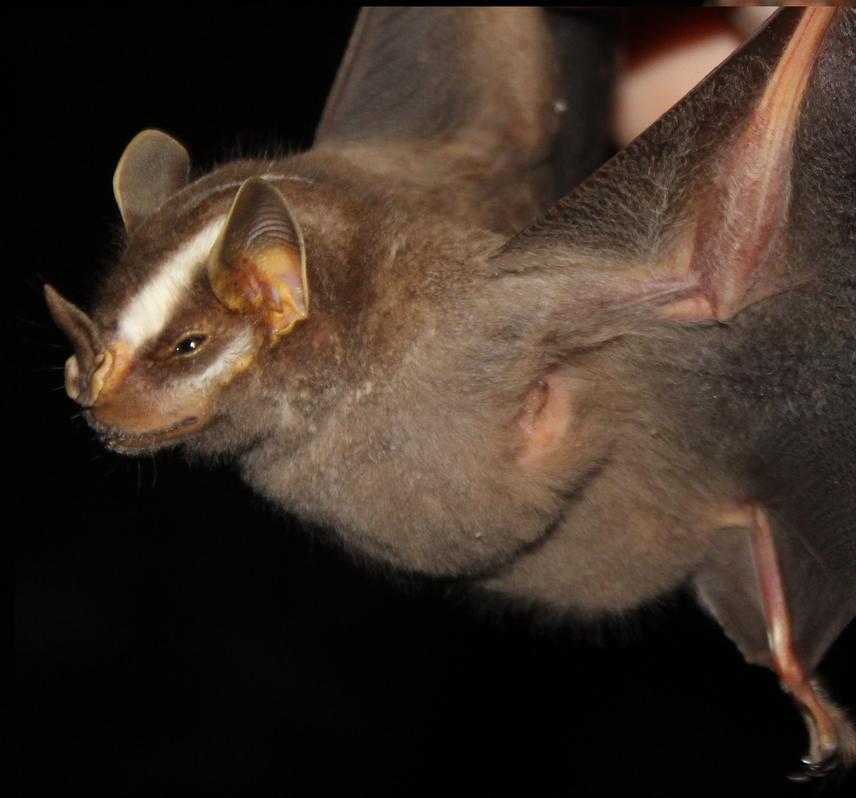Sergio Lopes de Oliveira
My work intends to Identify how the local factors and landscape context, influence the neotropical bats, and how the bats pressure on arthropods community in cocoa agroforestry landscapes in north-eastern Brazil. For this, I will: 1. Quantify the forest cover in the landscape around each sampling site and the local agroforestry management within sampling site. 2. Measure the taxonomic and functional diversity of leaf-nosed bats in cabrucas sampling sites; 3. Test the influence of forest cover in the landscape and local agroforestry management on the composition and structure of the leaf-nosed bats assembly; 4. Through of exclusion experiment, quantify the predations of bats on arthropods community.

Platyrrhinus lineatus.
The project aims to identify functional bat groups and measure the ecosystem services from cocoa agroforestry in the threatened Brazilian Atlantic Forest. Insectivorous bats press through the process from top to bottom the occurrence of arthropods that can cause losses in cocoa production. Understanding how the landscape composition, as well as local management of an agroforestry influences biodiversity, is essential for understanding other ecological processes subsequent. Explaining the influence of landscape in ecological processes can be the key for bat species conservation, forest remnants of the Atlantic Forest, and agroforestry systems, recognizing the ecosystem services provided by bats.
The study will be conducted in agroforestry cacao in the south of Bahia, a region of high conservation priority. Agroforestry sites with different degrees of shade and different percentages of forest cover in the surrounding landscape will be selected. The environmental variables related to the vegetation structure will be measured in a plot of 100 m x 25 m per sampling site. In each plot, ten mist nets (9 mx 2.5 m) will be opened from 5:30 p.m. onwards. at 10:30 p.m., for four non-consecutive nights within an annual cycle, totalling 120 nights. Diversity estimates (based on number of species and abundance) will be made to describe the community structure of bats in the cabrucas. Species extracted from the literature, such as diet, collected in the field, length and width of the wings and weight, will be used to estimate the functional diversity of bats. Twelve sites of cabrucas with different percentages of forest cover in the landscape will be drawn for the exclusion experiment. The cacao trees will be totally isolated at night with a nylon net that prevents bats from accessing the tree, but allowing the entrance of other predators. Isolation networks shall be daily at sunset and taken out the following morning for eight consecutive weeks. At the end of the period, arthropods shall be collected, identified at the lowest possible level and food groups.
The project seeks to emphasize ecosystem services, such as reducing potential pest’s arthropod in the agroforestry of cocoa, as well as of the bat conservation role and forests remnants landscape around the cocoa agroforestry.